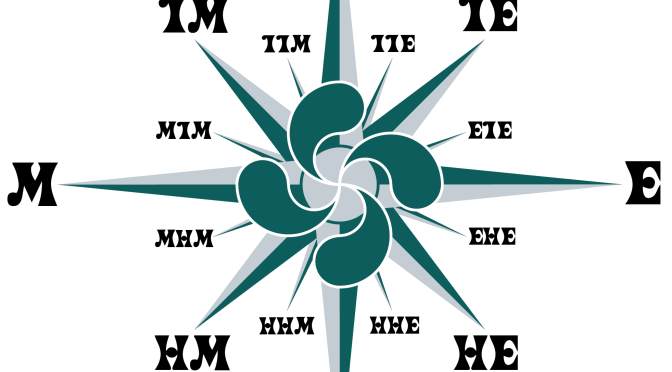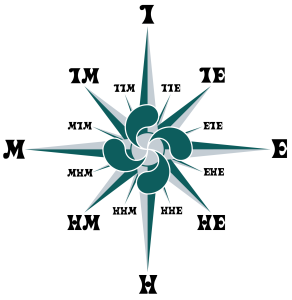The cardinal directions are so ingrained in our culture, language, and identity. Whether one is from the northwest or the southeast, the west coast or east coast, these directions almost define us. And they are relative. I might be from the northwest of the United States, but I’m also from southern Idaho. At a higher level, I’m from the western and northern hemispheres. These words are such a part of our everyday life, we likely never give any thought where they came from. Well, here’s where they come from, but in Basque.
- The four main cardinal directions are iparra (north), ekialdea (east), hegoa (south), and mendebaldea (west). Larry Trask, in his Etymological Dictionary of Basque, discusses the origins of each of these, most of which are connected to the directional winds:
- iparra, or in its indefinite form ipar, is a word native to Basque. While its origins aren’t completely clear, some have suggested it derives from ibar, the Basque word for valley. The logic here is that ibar-haize, meaning valley wind, is also the north wind and so ipar arose from ibar. For fishermen, ipar sometimes means east. ipar haizea, the north wind, is cold. ipar beltza, or black north, blows from the northwest while ipar zuria, the white north, blows from the northeast.
- ekialdea is the most transparent. It is a compound of eki and aldea, or sun and side, meaning literally sunny spot.
- hegoa is less clear. It might be a native word, but variants used in some parts of the Basque Country egoe and egoi suggest it might not be (native words tend not to have those extra vowels). Possibly it comes from the Latin aqualem (watery) through Béarnais. This would suggest an origin meaning “watery wind,” which aligns with the saying Hegoak hegala urean du (The south wind has a wing in the water). That said, there is a Basque deity, Hegoi or Egoi, that was the god of the south wind… Just like the north wind, hego beltza (black south) blows from the southwest and hego zuria (white south) blows from the southeast.
- mendebal is of Roman origin, from something like the French vent d’aval, meaning valley wind. It is very similar to the Spanish vendaval.
- Intermediate directions are described by compounds of the principal directions. For example, northwest is designated by ipar-mendebaldea while south-southeast is hego-hego-ekialdea.
- The compass rose is called a haize-arrosa in Basque, or wind rose, which is another term for a compass rose in English too.
A full list of all of Buber’s Basque Facts of the Week can be found in the Archive.
Primary sources: Puntu kardinal, Wikipedia
Discover more from Buber's Basque Page
Subscribe to get the latest posts sent to your email.



